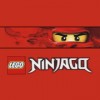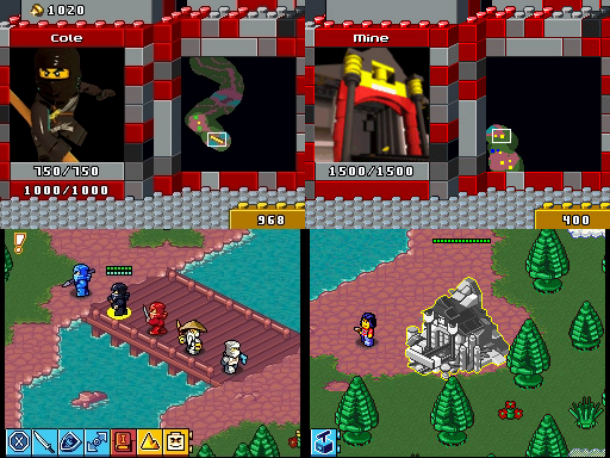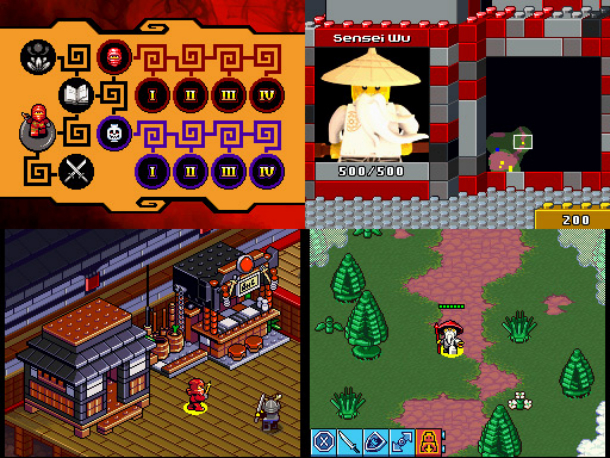LEGO Ninjago: The Videogame Review
 Game: LEGO Ninjago: The Videogame
Game: LEGO Ninjago: The Videogame
Developer: Hellbent Games
Publisher: TT Games/Warner Bros. Interactive Entertainment/LEGO Group
Available on: Nintendo DS Only
LEGO has become a well known name in the world of casual games, with their multiple titles including the likes of LEGO Star Wars, LEGO Indiana Jones and just about every other popular movie franchise known to man (here’s hoping for LEGO Twilight! Just kidding, don’t kill me). Not a lot of people however, know about the other side of LEGO games, the games exclusively for the Nintendo DS known as the LEGO Battles games. A couple of years ago the first LEGO Battles game came out with not much fanfare. It seemed to be quickly forgotten by the gaming community at large, and most people that still wanted their LEGO kick, just went back to the previously mentioned action platformer games.
Hellbent Games are back with another foray into the LEGO Battles universe, this one based on the little known, but entirely deadly, martial art form of Spinjitzu. LEGO Ninjago: The Videogame is based on the massively popular toy line, adds a little bit of an RPG element, a little sprinkling of RTS and then lets it loose on the world at large, but does LEGO Ninjago: The Videogame hold up in a world where the only LEGO games most people care about are based on popular movie franchises?
STORY: The story is very simplistic, as has come to be expected from a LEGO title (and the fact that they’re all ideally aimed at children), and revolves around a group of ninja who are recruited by the mysterious Sensei Wu, to gather up the only four weapons in the world which are capable of defeating the evil Lord Garmadon. In order to help with the collection of these weapons, Sensei Wu teaches each of the ninja’s how to use the ancient, if a little unknown, martial art of Spinjitzu.
Each act of the story tells the tale of finding each of these weapons. Usually starting with figuring out where it is, going on the quest to find the entrance to the cave, castle, or room in which the weapon is held and then fighting your way inside. Once the weapon has been collected, the player will then play the last chapter in the act, which is where the RTS element comes in. Once the player has achieved victory in this final chapter, the team of ninja’s will be tasked with finding the next weapon. Rinse and repeat until all weapons have been found, at which point the only thing left to do will be to actually use them.

I don’t see the yellow brick road! Are we going the right way?
GRAPHICS: If, when you turn on LEGO Ninjago, you expect to see the same type of graphics as you would in the more popular LEGO games then you’ll be sadly mistaken. Those games have full 3D graphics as well as other things which make them look superior. LEGO Ninjago: The Videogame has a look all to its own and, at first, will look to be inferior to most people. However, the second you start playing and delving into the story of the game, you’ll soon realise that the graphics fit with the style of the game almost perfectly.
The cartoon style of the game helps to remind the player that the game is based on a series of toys that are popular with children at the moment. It is very reminiscent of a Saturday morning cartoon show in terms of visuals and storytelling and is obviously something that would appeal to children, although it’s something that’s enjoyable for all ages of course.
SOUND: As with any Nintendo DS game the sound isn’t of the greatest quality, as the speakers on the device itself don’t allow for that. What LEGO Ninjago: The Videogame does offer in sound is something that’s rich and full, so for the times when the player wants the sound on, they can listen to something that shows the work that went into it. The sounds match everything that you’re doing while playing and also serve as an indicator as you which of the characters you’ve selected.

No, Raiden stole MY fashion style. I was wearing this hat first!
Each of the characters in the game have their own distinctive voice, though perhaps grunt would be a better way to describe the voices of each of the characters. Nevertheless, it’s easy enough to distinguish which of the characters are currently speaking and which ones you have selected, as an auditory indication is present as well as the usual visual ones.
GAMEPLAY: Most of the game will be controlled like any other RTS game you’ve ever played. You select a group of characters by drawing a bounding box around them, and then tap the area of the screen where you want those selected characters to move to. There’s often an obviously designated path which the game is trying to direct the players down in order to progress the story, but it is possible to stray from the path. Straying from the path is something that all players are going to want to do as those are the times when you’ll come across the Red Bricks and Minikits, both of which are the collectables of any LEGO game.
While most of the game is controlled like a standard RTS game, about 90% of the game won’t be in that style, or at least won’t feel like it. Most of the game will feel like a RPG as you’ll often be given the task of going to a specific point on the map, collecting something and then coming back or saving a couple of villagers from a group of oncoming enemies. Both of these scenarios feel more like an RPG than an RTS, and it is only when you get to the last act of each chapter where you’ll play something that feels like an RTS. When you do come across this shift in gameplay, it serves as a method of refreshing the player. Instead of staying with the same tried and true RPG style, which can get boring after a lengthy play session, players will be able to take on these RTS challenges to give their strategy and cunning a little workout, as well as elevating any boredom they may have attained along the way.

I styled the décor myself. I was going for the whole death and desperation look…
The main problem with the gameplay of LEGO Ninjago: The Videogame comes from the camera controls. The way most people will want to move the camera will be by using the stylus to move it around the map, or even by using the stylus to point to a specific section of the map and have the camera snap there. The way that the camera is actually controlled in the game is by using the D-Pad. While this might initially sound like the best option, considering that dragging the stylus is limited to placing bounding boxes around a group of characters, it brings up an issue which is obvious from the very moment you start playing the game in this way. It is very difficult to use the D-Pad while controlling anything on the screen using the stylus as, for the most part, you’ll be using the D-Pad one handed (which isn’t the easiest thing at the best of times) while also trying to perform tactical unit movement with the other hand and the stylus. It’s doable but it’s not very user friendly at all.
LONGEVITY: As with all of the other LEGO games, there’s plenty to be getting on with even when you’ve finished the main storyline. There’s the ability to challenge a friend to a battle using the console’s multi-card play feature, plenty of hidden characters, mini-kits and red bricks to collect. Then there’s the addition of an entirely new single player campaign (from the perspective of the Skeleton Legion) which can be played, effectively doubling the length of the entire game in a single move. Most people would probably find another game to play before they run out of things to do in LEGO Ninjago: The Videogame, which is nothing short of something brilliant.
VERDICT: LEGO Ninjago: The Videogame is one of those rare little gems that are often overlooked, but just like so many games out there, it shouldn’t be. It contains a nice little story with a lot of heart, and ninja’s. It also has a lot of replay value as well as a lot of content to keep people busy without having to replay anything at all, and ninja’s! If you’re expecting something that will look and play like the LEGO games you’re probably used to then you’re going to get a little bit of a shock, but keep playing, get over it, and you’ll start loving it soon enough. Yes, there are problems, most noticeably with the camera controls, but there are a lot more things that are done right. Also, did I mention ninja’s?





